Total trihalomethanes (TTHMs)
Vernon Water Department
Trihalomethanes are cancer-causing contaminants that form during water treatment with chlorine and other disinfectants. The total trihalomethanes group includes four chemicals: chloroform, bromodichloromethane, dibromochloromethane and bromoform. Read More.
Studies conducted in the U.S. and Europe have found that drinking tap water that carries disinfection byproducts increases the risk of developing bladder cancer. In animal studies, all trihalomethanes cause liver, kidney and intestinal tumors. Some human epidemiological studies also reported an association between disinfection byproducts and an increased risk of problems during pregnancy, including spontaneous miscarriage, cardiovascular defects, neural tube defects and low birth weight.
The health guideline of 0.15 parts per billion, or ppb, for the group of four trihalomethanes, or THM4/TTHM, was defined in a peer-reviewed scientific study by EWG and represents a one-in-one-million lifetime cancer risk level.
Samples
Samples exceeding legal limit (MCL)
Samples exceeding
health guidelines
Testing results - average by year
| Year | Average result | Samples taken | Detections | Range of results |
|---|---|---|---|---|
| 2014 | 6.67 ppb | 12 | 6 | ND - 27.2 ppb |
| 2015 | 4.41 ppb | 8 | 4 | ND - 26.5 ppb |
| 2016 | N/A | 0 | 0 | N/A |
| 2017 | 14.0 ppb | 8 | 5 | ND - 29.8 ppb |
| 2018 | 8.69 ppb | 16 | 5 | ND - 48.5 ppb |
| 2019 | 17.1 ppb | 16 | 10 | ND - 31.1 ppb |
ppb = parts per billion
State and national drinking water standards and health guidelines
EWG Health Guideline 0.15 ppb
The health guideline of 0.15 parts per billion, or ppb, for the group of four trihalomethanes, or THM4/TTHM, was defined in a peer-reviewed scientific study by EWG and represents a one-in-one-million lifetime cancer risk level.
EPA Maximum Contaminant
Level (MCL) 80 ppb
The legal limit for the group of four trihalomethanes, established in 1998, was based on the need for residual disinfectant levels in water served to customers and the cost of treatment. This limit does not fully protect against the risk of cancer due to exposure to trihalomethanes.
ppb = parts per billion
All test results
| Date | Lab ID | Result |
|---|---|---|
| 2014-02-04 | 3761-803-1213 | 1.80 ppb |
| 2014-02-04 | 3761-802-1118 | ND |
| 2014-02-04 | 3761-801-1155 | 1.80 ppb |
| 2014-02-04 | 3761-800-1139 | ND |
| 2014-05-06 | 3761-803-1240 | ND |
| 2014-05-06 | 3761-802-1215 | ND |
| 2014-05-06 | 3761-801-1255 | 1.30 ppb |
| 2014-05-06 | 3761-800-1310 | ND |
| 2014-08-05 | 3761-803-1204 | 23.1 ppb |
| 2014-08-05 | 3761-802-1059 | ND |
| 2014-08-05 | 3761-801-1141 | 27.2 ppb |
| 2014-08-05 | 3761-800-0947 | 24.8 ppb |
| 2015-02-03 | 3761-802-1030 | ND |
| 2015-02-03 | 3761-803-1133 | 3.00 ppb |
| 2015-02-03 | 3761-801-1145 | ND |
| 2015-02-03 | 3761-800-1122 | ND |
| 2015-05-05 | 3761-803-1043 | 3.30 ppb |
| 2015-05-05 | 3761-802-1104 | ND |
| 2015-05-05 | 3761-800-1203 | 26.5 ppb |
| 2015-05-05 | 3761-801-1019 | 2.50 ppb |
| 2017-08-01 | 3761-800-1115 | ND |
| 2017-08-01 | 3761-801-1315 | 29.8 ppb |
| 2017-08-01 | 3761-803-1135 | 27.8 ppb |
| 2017-08-01 | 3761-802-1050 | ND |
| 2017-11-01 | 3761-803-1140 | 2.80 ppb |
| 2017-11-01 | 3761-800-1305 | 25.9 ppb |
| 2017-11-01 | 3761-801-1043 | 25.5 ppb |
| 2017-11-01 | 3761-802-1117 | ND |
| 2018-02-06 | 3761-802-1126 | ND |
| 2018-02-06 | 3761-800-1103 | 48.5 ppb |
| 2018-02-06 | 3761-801-1013 | 29.9 ppb |
| 2018-02-06 | 3761-803-1033 | 36.5 ppb |
| 2018-05-01 | 3761-802-1208 | ND |
| 2018-05-01 | 3761-800-1001 | ND |
| 2018-05-01 | 3761-801-1315 | 13.0 ppb |
| 2018-05-01 | 3761-803-1300 | ND |
| 2018-08-07 | 3761-802-1320 | ND |
| 2018-08-07 | 3761-800-1141 | ND |
| 2018-08-07 | 3761-801-1047 | 11.2 ppb |
| 2018-08-07 | 3761-803-1103 | ND |
| 2018-11-06 | 3761-803-1131 | ND |
| 2018-11-06 | 3761-800-1028 | ND |
| 2018-11-06 | 3761-802-1049 | ND |
| 2018-11-06 | 3761-801-1109 | ND |
| 2019-02-06 | 3761-801-1003 | 26.0 ppb |
| 2019-02-06 | 3761-803-0942 | 28.2 ppb |
| 2019-02-06 | 3761-802-1051 | ND |
| 2019-02-06 | 3761-800-1023 | 21.7 ppb |
| 2019-05-07 | 3761-803-1059 | 30.8 ppb |
| 2019-05-07 | 3761-801-1120 | 28.2 ppb |
| 2019-05-07 | 3761-802-1032 | ND |
| 2019-05-07 | 3761-800-1139 | 26.6 ppb |
| 2019-08-06 | 3761-800-1103 | 31.1 ppb |
| 2019-08-06 | 3761-802-1130 | ND |
| 2019-08-06 | 3761-801-1000 | 26.7 ppb |
| 2019-08-06 | 3761-803-1316 | 26.6 ppb |
| 2019-11-05 | 3761-800-1401 | 27.7 ppb |
| 2019-11-05 | 3761-801-1320 | ND |
| 2019-11-05 | 3761-803-1307 | ND |
| 2019-11-05 | 3761-802-1341 | ND |
